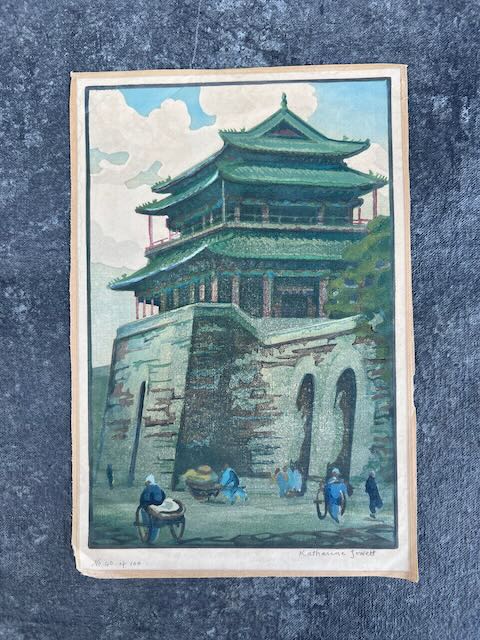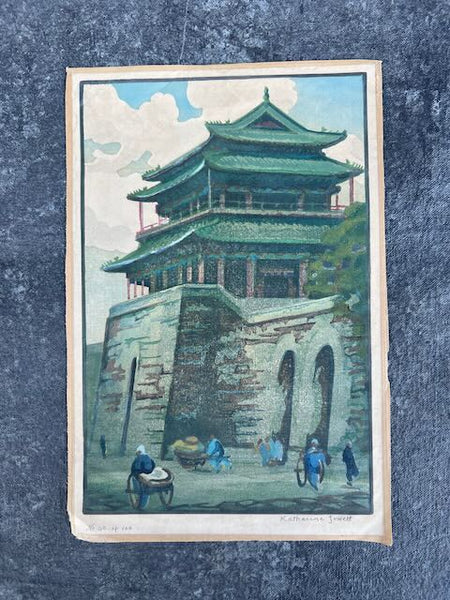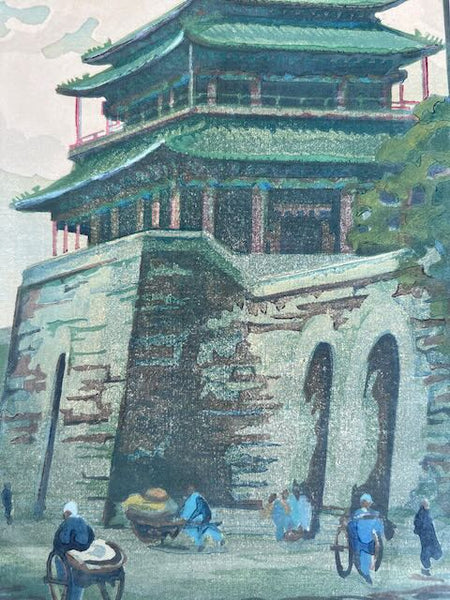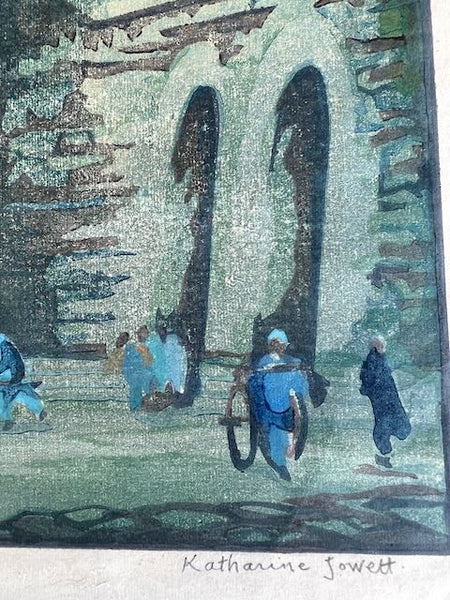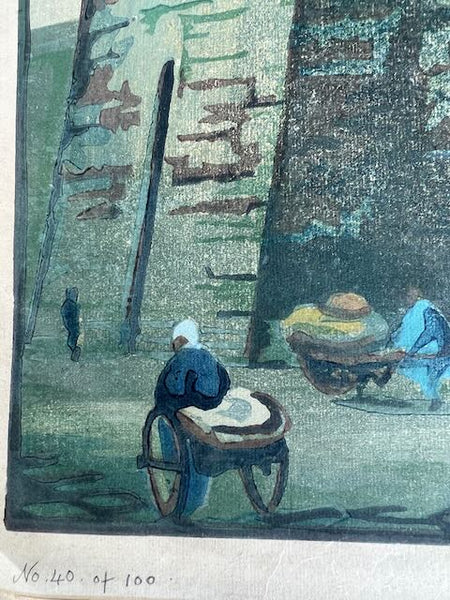Katharine Alice Jowett (1883–1972) Chien Men, Peking Woodblock AP1764
Signed and numbered 40/100. Measures 8 3/4" x 13 1/8"
Pencil signed and numbered 11 of 100, this is a rare print by Katharine Jowett from 1930 of the Chien Men gate, the main gate to enter Peking. While living in China, Jowett produced detailed studies of Beijing’s architectural beauties. Among others, she painted the Temple of Heaven, the Qianmen Gate and the watchtowers and pagodas of the Forbidden City. Some of her works are rumored to have been the only Western art pieces to be displayed in Mao Zedong’s personal chambers.
THE WOODBLOCK PRINT
A non-standard size (paper: 8 3/4″x13 1/8″, image: 8″x12″), this rare print by Katharine Jowett is in very fine condition with full and clean margins and a clean verso. Unlike most Japanese woodblocks, this print uses oil-based paints on a different style paper.
ABOUT THE ARTIST
Katharine Alice Jowett (1883–1972) was a British artist, best known for her cityscapes of Beijing (Peking) in the early to mid-20th century. Learning mokuhanga from artist Bertha Lum, another western émigré from America and a small contingent of these artists in China, she was a proponent of the shin-hanga style of woodcut printing.
Jowett was born in Devon in 1883. In her late teens, falling in love with a missionary, she followed him to China. While she fell out of love with the missionary and that lifestyle, she then moved to Beijing where she met and married Hardy Jowett in 1910. Jowett volunteered at the Peiping Institute of Fine Arts, where her husband was on the board; the Institute organized exhibitions and lessons in the arts. At this point, Jowett had mainly been producing watercolours and oils, but through the institute’s exhibitions, she was introduced to the Japanese woodblock techniques and began to create woodcuts.
Along with Bertha Lum, Jowett exhibited at various centres in Beijing. While Lum had learned shin-hanga in Yokohama, Jowett never studied in Japan, and appears to have absorbed the techniques from Lum’s studio.
Jowett produced detailed studies of Beijing’s architectural beauties. Among others, she painted the Temple of Heaven, the Qianmen Gate and the watchtowers and pagodas of the Forbidden City. Some of her works are rumoured to have been the only Western art pieces to be displayed in Mao Tse-Tung’s personal chambers. Unlike traditional woodblock prints, Jowett did not use a keyblock to outline her design. (Even some contemporaneous Japanese woodblock print artists like Ito Yuhan were starting to dispense with the use of a keyblock to give prints the softer look of watercolors.) There are estimated to be two dozen designs by her.
A number of her works were acquired in 1940 by Robert O. Muller, a prolific collector of Asian art. Jowett appears to have produced many of her works for the tourist market, but her numbered editions were (and are) the most prized and likely bought by more serious collectors.

